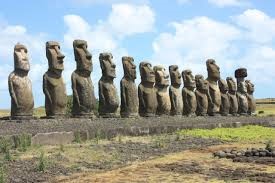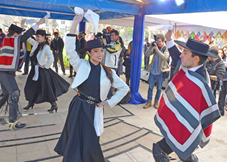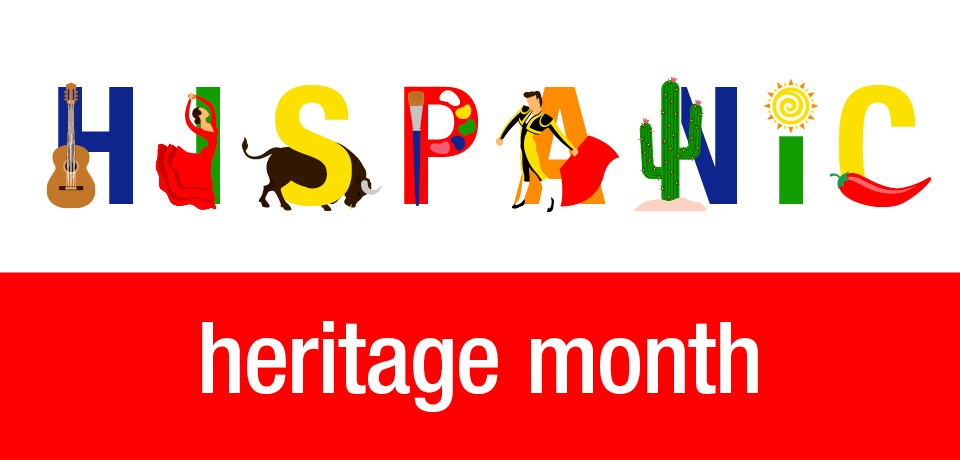This month is Hispanic heritage month and I‘d like to talk about the amazing country my family is from, Chile. Chile is located between the Pacific and Atlantic oceans. It’s the long strip that borders “The strait of Magellan” on one end and the Andes Mountains on the other in South America.

Culture
In the arts world, Chile is known for its incredible literary tradition. Some of the world’s most widely acclaimed poets came from Chile, including Nobel Prize winners Gabriela Mistral and Pablo Neruda. The poetry scene in Chile is also a major venue for Mapuche artists, who often work in both Mapudungun and Spanish. Chilean novelists have achieved global success. Authors Roberto Bolaño and José Donoso are literary darlings. Isabel Allende (cousin to the late President Salvador Allende) is perhaps the most popular Spanish-language writer in the world, even above literary titans like Marquez and Borges. President Barack Obama honored Allende with a Presidential Medal of Freedom.
Chile has a strong cultural heritage from its indigenous peoples, especially the Mapuche, Patagonians, and the Rapa Nui. The most famous ethno-tourist destination is Easter Island, which hosts many megalithic monuments left by the island’s historical Rapa Nui population. Despite some disputes and shortcomings (such as the current conflict over Mapuche autonomy), the country of Chile has made some notable efforts to preserve local cultures. For example, while indigenous languages are dying out in many places, the Mapuche still speak their cultural language (Mapudungun) at a sustainable rate.
Economy
Chile has historically undergone major booms and busts based on the performance of its copper industries. The economy did expand greatly during the years under Pinochet by coming out of a recession caused in part by strict U.S. trade restrictions against the Allende administration. Since the return to democracy, Chile has continued to have a strong (largely services-based) economy.
The Cueca: Song, story and dance
The national dance of Chile is called the Cueca. This dance has rich historical roots in both African and Native American cultures. Even though Chileans have been dancing the Cueca for years, it wasn’t declared the official dance of Chile until September 1979.

In Chile, dancers wear traditional clothes. The male dancer wears hat and clothes usually worn by the haso, who is Chilean countryman and rider. The female dancer is dressed in colorful dresses with an apron. It is interesting to mention that dancers hold white handkerchiefs (pañuelos) and they do not actually touch during performance of the dance. They communicate through body moves and facial expressions
Food
Let’s talk about food! The cuisine of the central valley and coast has been influenced by the traditions of the native people and European immigrants, particularly those who arrived during the second half of the nineteenth century, with farm life and agriculture being the most important influence. In the past, agriculture was a very important aspect of the economy and the Fundo (ranch, farm) was the center of everyday life. Country traditions still survive and food is a good example of it.
One of Chilean’s best go to snack are Empanadas! While there are a number of different kinds of empanadas made in Chile, empanadas de pino, filled with ground beef, onions, raisins, black olives, and hard boiled eggs, are the most popular.
Chileans are also one of the biggest bread eaters in the world; Chileans eat bread at breakfast, lunch (as a side or appetizer), Las onces or dinner. Bread for “onces” should be as fresh as possible, ideally bought still hot from the local bakery on a daily basis.
Chile is one of the world’s largest producers of wine and many Chilean recipes are enhanced and accompanied by local wines.
Chile Fun Facts
Here’s some fun facts about Chile:
- Chile has a coastline of 4,435 km although it is only 175 km wide. The country is home to nearly 1500 volcanoes and 500 of them are potentially active.
- Chile witnesses four seasons – summer, autumn, winter and spring and have a minimum of seven major climatic subtypes.
- Chile received its independence from Spanish colonial rule in 1913.
- It’s winter in Chile when it’s summer here, can you imagine going to the beach during Christmas time?
- The capital of Chile is “Santiago de Chile”.
- The local currency of Chile is called “Chilean Peso
- The oldest mummies in the world, the Chinchorro mummies are located in Chile.
- Valparaiso is known as “The Garden City” and one of the most prosperous cities in Chile.
- The national bird is the Andean Condor and the national animal is the Huemul.
- Chile exports fish, copper, fruits, wine, chemicals, paper and pulp. It is also rich in hydro power and the sixth largest exporter of wines.
- The official language is Spanish though the dialect is different from its neighboring nations.
- Christianity is the main religion followed in Chile. 63% of Chileans are Roman Catholics, 15% – 18% are Protestants and 18% are agnostics and atheists.
- Chile has one of the highest lakes above sea level in the world called “Lake Chungara”.
- The Atacama Desert is the world’s l8th largest desert that has the longest recorded dry spells with no rain for 40 years.
